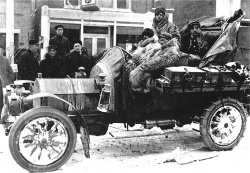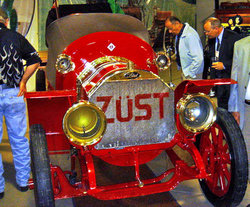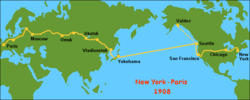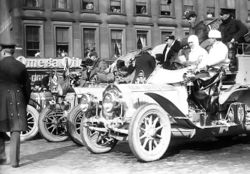Difference between revisions of "Zust"
m |
m |
||
| Line 1: | Line 1: | ||
{{X}} | {{X}} | ||
| − | [[File:Zust logo2. | + | [[File:Zust logo2.png|center|180px]] |
| + | |||
[[File:720px-Zust_ginori.jpg|thumb|right|250px|'''[[Lorenzo Ginori Lisci]] in shown in the drivers seat of a an early Züst (circa 1904) and the person on the far right is [[Roberto Züst]]. The photo was taken in the Züst workshop in [[Intra]] on Lake Maggiore.''']] | [[File:720px-Zust_ginori.jpg|thumb|right|250px|'''[[Lorenzo Ginori Lisci]] in shown in the drivers seat of a an early Züst (circa 1904) and the person on the far right is [[Roberto Züst]]. The photo was taken in the Züst workshop in [[Intra]] on Lake Maggiore.''']] | ||
[[File:1908_Zust_28-45_HP.jpg|thumb|right|250px|'''1908 Züst 28-45 HP 4 cylinders, 7432 cc displacement 45 hp]] | [[File:1908_Zust_28-45_HP.jpg|thumb|right|250px|'''1908 Züst 28-45 HP 4 cylinders, 7432 cc displacement 45 hp]] | ||
Latest revision as of 23:24, 17 December 2016
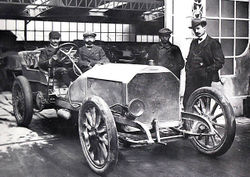
1905 - 1917
Early in the century when Roberto ZÜST died (a Swiss-born engineer who had founded a factory for precision machine tools for metal working in Intra, Lake Maggiore), his children in 1905 decided to open a second factory in Milan, to build their own cars and commercial vehicles. The first two ZÜST models had 4-cylinder engines ranging from 7432 cc and 11308 cc. In 1906 a branch was opened in Brescia, which was named Brixia-ZÜST (from the Latin name of Brescia) and was used to produce cheaper cars. After the 14/18 HP (with a 3770 cc engine), the Brixia-ZÜST presented the 18/24 HP, with a 4-cylinder 3770 cc, and 10 hp with a 1386 cc 3-cylinder engine. In 1910, the 10 hp engine was increased to 1501 cc and a batch of 10 copies, of these cars, were exported to London, where they went into service as taxis. In 1911 the 10 HP, 14/18 HP (which had since been increased to 2297 cc) and the 18/24 HP (increased to 4942 cc) were put out of production.
When, in 1912, Brixia-ZÜST was absorbed by ZÜST, it went to the person who had always controlled the shares. ZÜST, meanwhile, had become a household name known throughout the world, participated with a 28/45 HP in the grueling New York - Paris race in 1908. This competition, which was approached by ZÜST with extreme seriousness and commitment despite the unfortunate outcome (the race was won by American Thomas in front of the German Protos). The reliability of the 28/45 HP was shown in this race, along with others. Sometimes they were in least place (the 28/24 HP had to go through the Siberian wilderness, thus repeating the companies accomplished in 1907 by more powerful Itala 35/45 HP during the raid Beijing - Paris).
At the wheel of this glorious ZÜST was the driver Sirtori, his fellow adventure, the mechanic Haaga, and the journalist of the Mattino di Napoli (Morning of Naples), Antonio Scarfoglio. These three brave men had to face hardships of every kind: for example, in America, while they were engaged in the stretch between the Alleghenies and the Rockies were even attacked by a pack of wolves. Ironically, the 28/45 HP, after resisting a thousand hard miles, went accidentally destroyed in the English padock of Bromley, it was completely burned by a fire caused by a porter, who had come in with an acetylene lamp. The productions of ZÜST, around the years of the race New York – Paris, was made up of three models: the 15/25 HP (2853 cc), the 35/50 HP Special GS (6321 cc) and the 50/60 HP later renamed S 235 (7432 cc). In 1913 they presented the new HP 25/35 S 305, characterized by a radiator similar to that of Fiat at the time, with a Biblocco 4712 cc engine. In the period from 1915 to 1916, ZÜST launched the 15/25 HP 365 S with a displacement of 2952 cc.
In October 1, 1917 ZÜST was absorbed by the Officine Meccaniche of Milan, the future OM, one of the ancestors of Fiat and IVECO. Source
1908 Race Around the World
The race
It was in Times Square February 12, 1908 that six cars representing four nations were at the starting line for what would become a 169 day ordeal. The national flags of Germany, France, Italy and the United States flew, with the Protos representing Germany, the Züst representing Italy, three cars (De Dion-Bouton, Motobloc, and Sizaire-Naudin) representing France, and Thomas Flyer competing for the United States. At 11:15 AM a shot from a gold plated pistol signaled the start of an around-the-world race, with this still novel form of transportation. Ahead of the competitors were very few paved roads, and in many parts of the world no roads at all. Often, the teams resorted to straddling the locomotive rails with their cars riding tie to tie on balloon tires for hundreds of miles when no roads could be found.
The route then took them to Valdez, Alaska by ship. The Thomas crew found impossible conditions in Alaska, and the race was rerouted across the Pacific by steamer to Japan where the Americans made their way across to the Sea of Japan. Then it was on to Vladivostok, Siberia by ship to begin crossing the continents of Asia and Europe. Only three of the competitors made it past Vladivostok, the Protos, the Züst, and the Flyer.
The tundra of Siberia and Manchuria was an endless quagmire with the spring thaw making progress difficult. At several points, forward movement was often measured in feet rather than miles per hour. Eventually, the roads improved as Europe approached and the Thomas arrived in Paris on July 30, 1908 to win. The Germans arrived in Paris four days earlier, but had been penalized a total of 30 days for not going to Alaska, and for shipping the Protos part of the way by rail car. That gave the win to the Americans with George Schuster (the only American to go the full distance from New York to Paris) and Montague Roberts by 26 days. The Italians arrived later in September 1908.
The race was of international interest with daily front page coverage by the New York Times (a cosponsor of the race with the Parisian newspaper Le Matin). The significance of the event extended far beyond the race itself. It established the reliability of the automobile as a dependable means of transportation, taking the automobile from an amusement of the rich to a reliable and viable means of long distance transportation for the masses. It also led to the call for improved roads to be constructed in many parts of the world.
The 1965 movie The Great Race was loosely based on the events of the 1908 New York to Paris Race.
External link
- http://www.targaflorio.info/zust.htm

- Historic 1907 Züst
- The Story of the 28/45 HP Züst No. 127 Great Race – New York to Paris – 1908 (PDF)
| Car Information and Photos by Marque: A - B - C - D - E - F - G - H - I - J - K - L - M - N - O - P - Q - R - S - T - U - V - W - X - Y - Z |
| Motorcycle Information and Photos by Marque: A - B - C - D - E - F - G - H - I - J - K - L - M - N - O - P - Q - R - S - T - U - V - W - X - Y - Z |

